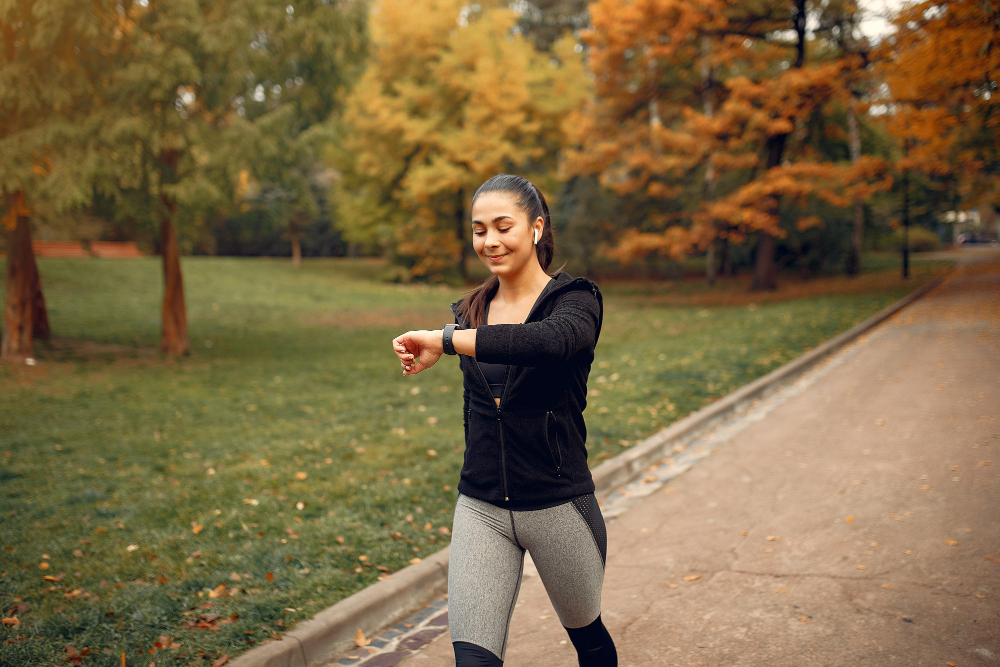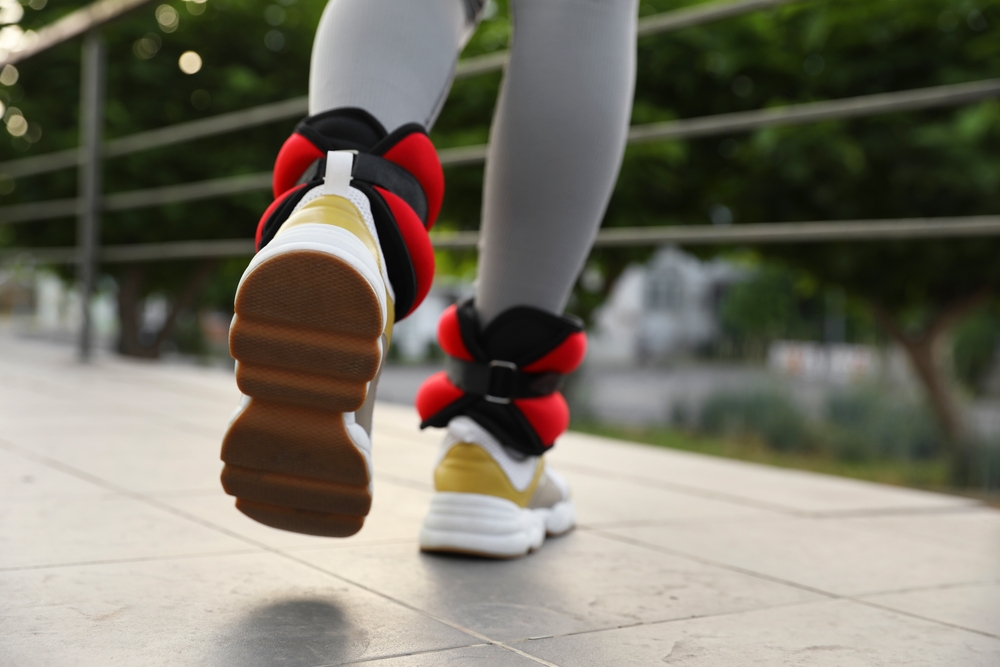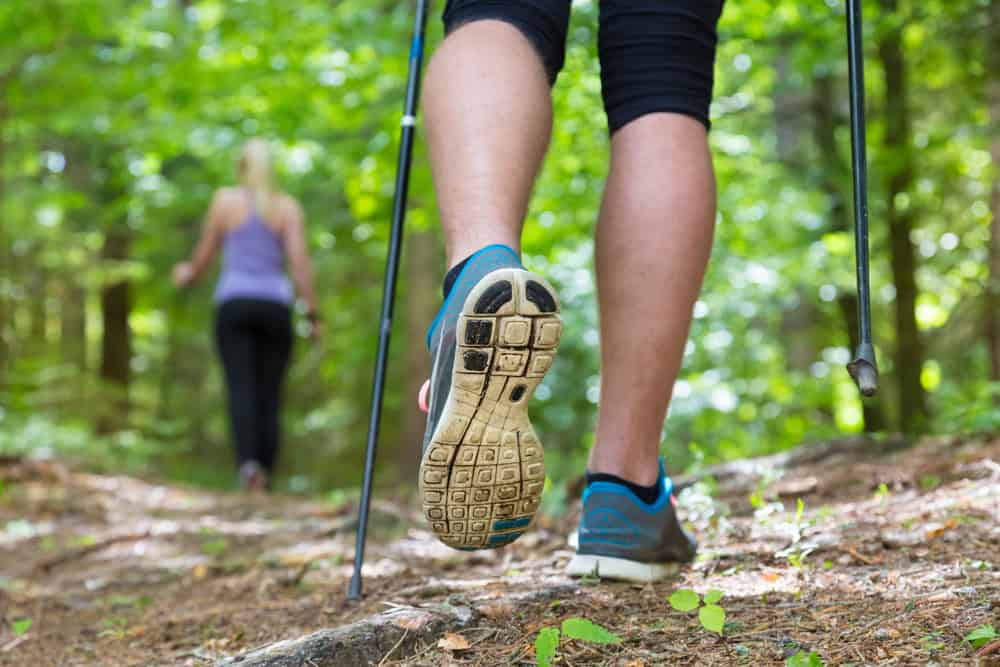
Are you looking for an easy, affordable way for weight loss? Walking could be just what you’re looking for. You can do it anywhere, get the desired results, and you don’t need any special equipment. However, not all walks will provide the same fitness benefits.
“Few studies suggest that some walks will help you burn more calories, reduce belly fat, and improve your metabolism faster than others” [1].
If you’re wondering how to lose weight by walking, we’ve got you covered. These 7 types of walks will boost your fat loss potential and help you stick with walking without relying on strenuous workouts from month to month.
Let’s take a closer look at these 7 very effective types of walks for quicker and effective weight loss:
1.) Nordic Walking: A Full Body Fat Burner
When you walk with poles, you are using your poles, so you are also activating your upper body at the same time. It turns your regular walk into a full-body walk that’s easy to do.
Why does it work?
- Works 90% of your muscles.
- Burns up to 40% more calories than walking.
- For improved posture benefits.
- Less impact on your joints.
- Nordic walking is especially good for people with knee pain or older adults looking to preserve their joints by burning fat in a lower-strain environment [2].
2. Japanese Pyramid Walking or Interval Walking

Inspired by HIIT, interval walking alternates between segments of fast walking and slow walking. A study from Japan showed that this method can significantly improve your endurance and help you lose body weight even quicker [3].
Try this pattern:
- Walk fast for 3 minutes.
- Recover with slow walking for 2 minutes.
- Repeat for 30 minutes.
- By walking this way, you’ll improve your metabolism and you’ll burn calories even after your walk has ended, a phenomenon called the afterburn effect.
3. Brisk Walking

Do you want to know how to lose weight by walking without needing extra stuff? Just pick up your pace.
Brisk walking means walking at a pace of around 4–6 km/h, meaning talking is easy but singing is not.
Benefits of brisk walking:
- Improves heart health.
- Burn belly fat.
- Improves mood and energy.
- If you can, aim for 30–45 minutes per day, 5 times a week, for weight loss goals.
4. Inclined Walking or Uphill Hiking

Whether it be walking uphill or walking on a treadmill incline, both elevated walking routines create more resistance and burn more calories than walking on flat ground.
Why it’s effective:
- Tone thighs, glutes, and calves
- Burns 17-32% more calories
- Increases lower body strength
This kind of walk also has an increased fat-burning component, especially fat around the abdomen and hips [4].
5. Weighted Walking for Strength and Fat Burning

You can turn a simple walk into a calorie-burning workout by adding light weights (ankle weights or wrist weights).
Why it works:
- Burns an additional 10-20% of calories
- Creates lean muscle mass
- Increases bone and joint strength
Start with .5-1 kg weights. Eventually, this walk can be used as both a weight-loss exercise and simultaneously as a strength and endurance exercise.
6. Backwards Walking and Figure 8 Walking

If you’re up for a challenge to your brain and want to burn fat, walk backward or define one or two figure 8 shapes while walking.
Benefits:
- Stretches and uses underutilized muscles
- Increases coordination and agility
- Burns 6 METS (metabolic equivalent of task-METs are a measure of energy expenditure/level of activity)
If you like to throw a challenge into the mix and increase brain and body coordination, this is a very good walking discipline to engage in and be active!
7. Mindful or Chi Walking

Mindful walking draws inspiration from meditation and Tai Chi. It emphasizes posture, proper breathing, and slow and deliberate movements.
Why is it helpful for weight loss?
- Reduces the stress hormones that store fat.
- Regulates digestion and blood sugar levels.
- Supports healthy habits and lifestyle modifications.
- Mindful walking combines more than just the physical. It can soothe your nervous system, help with awareness, and bolster your emotional well-being [5].
Final Thoughts: Lose Weight through Walking (The Smart Way)

If you are currently seeking how to lose weight through walking, these 7 styles convey that you don’t need a gym or strenuous workouts in order to effectively lose weight. From speed walking, interval walking, and even mindful walking, you have so many options for burning calories and improving your fitness journey.
Be mindful; start with what is comfortable and build up, and avoid overextending yourself at the start. Also, for the best comprehensive efforts, make sure that you are incorporating a healthy diet, drinking lots of water, and sleeping! Remember, the most effective walks for losing weight are the ones you enjoy and can practice regularly!
FAQs
-What type of walking is best for rapid weight loss?
Power walking, or brisk walking at a steady pace, burns more calories and is the most effective walking exercise for losing weight rapidly. Walk at least 30 minutes a day.
-Can I lose belly fat by walking every day?
Yes! Walking consistently at least once daily, ideally uphill or interval walking, reduces overall body fat, including belly fat, when combined with a healthy, balanced diet.
-What time of day is best to walk for weight loss?
Walking in the morning may increase metabolism and fat burning throughout the day, allowing for sustainable walking later in the day, and helping to curb late-day snacking. The most important aspect of walking is consistency, more than the time of day.
-Can I lose weight walking only without a diet?
Walking can help with calorie metabolism and ultimately weight loss, but combining walking with healthy, calorie-controlled eating helps promote faster, more effective weight loss. The weight loss progress and reduction of body fat may be slower without diet changes.
As per our expert, Dr Rajeev Sharma, “Walking 10,000-12,000 steps a day but keeping in mind to spread those throughout the day is essential. In our sedentary lifestyle, getting up after every 55 minutes for 5 minutes helps keep the metabolism active”.
(The article is written by Deepa Sarkar, Medical Writer, and reviewed by Monalisa Deka, Senior Health Content Editor)
Recommended Reads
Tirezeptide: Your New Ally In Fighting Obesity?
Trying to Lose Weight? Here’s Why Oats Should Be Your New Best Friend
References
1. Hijikata Y, Yamada S. Walking just after a meal seems to be more effective for weight loss than waiting for one hour to walk after a meal. Int J Gen Med [Internet]. 2011;4:447–50. Available from: http://dx.doi.org/10.2147/IJGM.S18837
2. Muollo V, Rossi AP, Milanese C, Zamboni M, Rosa R, Schena F, et al. Prolonged unsupervised Nordic walking and walking exercise following six months of supervision in adults with overweight and obesity: A randomised clinical trial. Nutr Metab Cardiovasc Dis [Internet]. 2021;31(4):1247–56. Available from: http://dx.doi.org/10.1016/j.numecd.2020.12.012
3. Karstoft K, Winding K, Knudsen SH, Nielsen JS, Thomsen C, Pedersen BK, et al. The effects of free-living interval-walking training on glycemic control, body composition, and physical fitness in type 2 diabetic patients: a randomized, controlled trial. Diabetes Care [Internet]. 2013;36(2):228–36. Available from: http://dx.doi.org/10.2337/dc12-0658
4. Wong MWH, Davis DW, Perez OR, Weyers B, Green DM, Garcia AV, et al. An exploratory study comparing the metabolic responses between the 12-3-30 treadmill workout and self-paced treadmill running. Int J Exerc Sci [Internet]. 2025;18(6):56–64. Available from: http://dx.doi.org/10.70252/UBIX5911
5. Teut M, Roesner EJ, Ortiz M, Reese F, Binting S, Roll S, et al. Mindful walking in psychologically distressed individuals: a randomized controlled trial. Evid Based Complement Alternat Med [Internet]. 2013;2013:489856. Available from: http://dx.doi.org/10.1155/2013/489856
